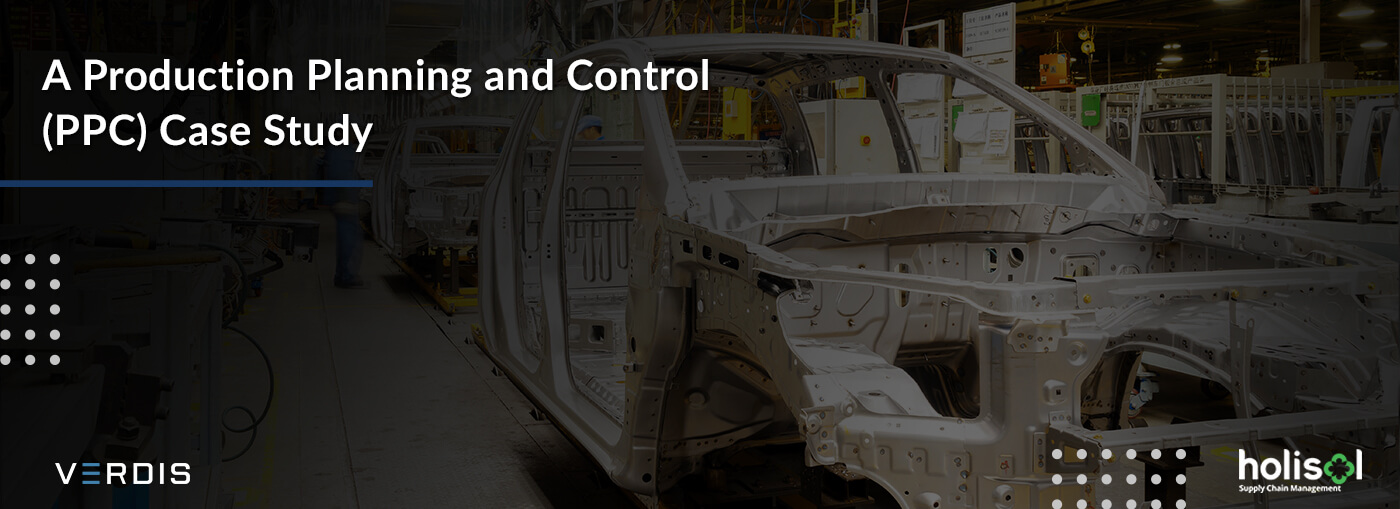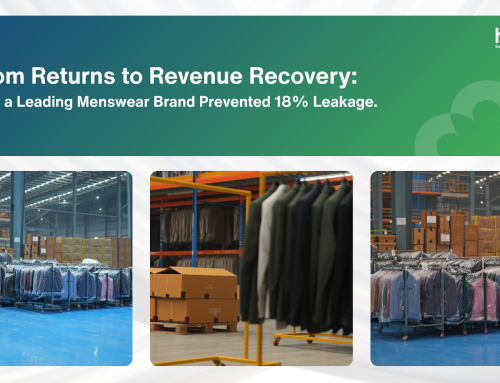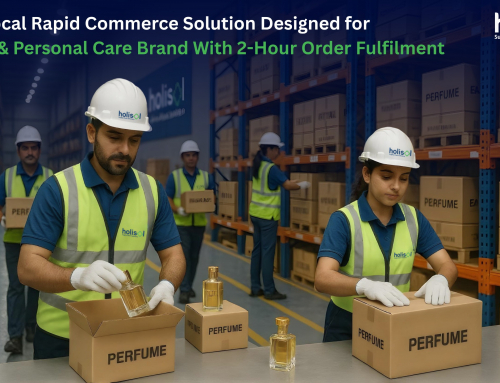Project Description
Overview
Markets today are characterized by rising customer expectations and competitive intensity to deliver products on time in the desired mix. This objective faces multiple headwinds – from supplier linked issues, production capacity limitations to constraints imposed by the ecosystem such as adherence to rules. Apart from such limitations which are in the realm of certainty, there are uncertainties which affect production planning, for example, the fluctuating sales mix and the supplier linked issues.
This necessitates the need for a new generation production planning methodology that is more flexible, responsive, and robust, where processes are optimized through greater operational transparency, end-to- end integration, and constant evaluations and improvements of potential stress points and fault lines. Further, when such optimization is coupled with rapid product iteration, new product innovation, and greater speeds of delivery, supply chains acquire competitive advantage and greater resilience to market fluctuations.
The transition to an automated planning model incorporates a major revision of existing systems in terms of adoption of digitalization resources and tools as well as analytical solutions that drive optimization in complex problem and solution space. The following case study provides an insight and analysis of how Verdis fulfils the needs of the supply chain of the 21st century and lends the optimization expected from a futuristic SaaS product with advanced analytical capabilities to the job of Production Planning.
The Study
The production planning scenario was studied in the case of a leading Japanese automobile multinational company, with a major market presence in India. With four manufacturing plants located across India, delivering a total of 25 models of scooters and motorbikes, of multiple variants, colour types, and BS-types in India’s markets and abroad, the case is a unique study of how AI, applied to a specialized segment of this mega supply chain, can accrue competitive advantage and generate greater process optimization.
For such a mega corporation, the scope of the production environment is wide. For an auto company, production entails the composite of manufacturing and packaging, an exercise that is aimed at the fulfilment of the sales requirements for domestic and international markets.
A study of the environment of production in this corporation revealed a high degree of complexity
- The production process is constrained within the limitations of its incident physical infrastructure; the maximum capacity of production of a model, type, or BS-type varying by plant and manufacturing line, or individual manufacturing lines assigned for the manufacturing of particular models only impose stringent restriction on the production process.
- The production can only occur in line with the availability of raw materials and components.
- Sales forecast, which is based on an evaluation of the brand value, historical sales trends, demographic data, and changing customer tastes, is not exact and therefore, subject to the fluctuations of the market.
Within this landscape, the production planning exercise needs to deliver cost optimization and a seamless tie-up of supply and demand, while negotiating within the constraint boundaries of the production environment and the uncertainties of the external environment.
Challenges for a Traditional Planning Methodology
The traditional planning methodology seeks to balance supply and demand within reasonable limits of the production capacity. To ensure responsiveness to demand and supply fluctuations, the planning is undertaken in multiple stages, with the objective of achieving greater control with greater planning iterations.
Inspite of this and due to the intrinsic nature of the environment, several complexities exist for the traditional production planning model, which makes the quick drafting of a strategic and effective production plan quite impossible to achieve.
Challenges arise due to
- Multiplicity of variables. The Production planning process involves multiple variables. Consequently, the number of possible combinations of these variables to reach an optimal solution makes the task of finding an optimal solution all that more difficult through manual effort. The variables include those of numerous Models, Plants, Lines, BS -Type, Type, etc.
- Changing capacities over time. Due to management actions, it is possible that the production/packaging capacity of a Line or Plant for a given model, category, or sub-category changes during the length of the planning target period. The planning process, therefore, needs to enable such variations of capacity to be flexibly set for the plan output.
- Different model validities. An auto company must try to meet the changing tastes of consumers and capture market opportunities through the introduction of new models. If the sales of a model drop, such models may need to be decommissioned. A production planning model should be able to incorporate the introduction and withdrawal of different models as the need arises and plan for production of models, which are relevant for the different periods within the target plan period.
- Unique requirements for exports and domestic dispatches. The packaging specifications for CKD and CBU units are distinct. The CKD lot packaging size varies by countries too.
- Application of selected criteria. Due to the nature of the ecosystem, it may be imperative for an auto company to appropriate specific assembly lines for the manufacture of specific models only or to utilize some minimum capacities for different plants. The production planning exercise has to ensure that such requirements are incorporated as and when they
- Priority of capacity allocation. Apart from allocating capacity for manufacturing, a production planning exercise may involve prioritization of the allocation of a model to a Plant or Line due to on-ground realities. The planning exercise should be able to incorporate such a requirement.
Since the assimilation and control of all these factors within a single production plan is unfeasible, corporations often allocate a substantial budget and human potential towards the planning of production – a resource that could be utilized towards research and development and more productive uses.
The Verdis Solution
Using Verdis’ analytical AI framework, the real-world production environment was replicated in a virtual space with all its incident boundaries, multi-factorial landscape, and complexities. Using a mathematical model designed to span the complete N-dimensional space of the production environment, the PPC module of Verdis ran a simulation to create a number of possible contenders for the final production plan. During this process, production capacity allocation occurred in a series of stages based on a Hierarchy of Needs with the added imposition of cost optimization and fulfilment of sales requirement. Finally, a solution with the highest degree of optimality was chosen from among the multiple solutions developed. This was the final production plan.
The solution proposed by Verdis ensured
- Greater optimization than what is possible using conventional methods. This is possible due to the AI analytical capabilities of Verdis.
- Enhanced productivity. Verdis delivered its optimized output in a matter of minutes – a feat that is unachievable simply through human effort; a typical manually-generated production plan takes from between 2-3 business days and team support for development
- Greater responsiveness. Due to the flexibility and ease of use of the PPC interface, new details and variable changes of the supply chain environment could be quickly integrated. This created the possibility of quick implementation
- Greater Cost savings. Reasonable cost reductions were availed through greater process efficiencies and optimal capital, labour, materials, and capacity utilization in one cycle. It is estimated that cost saving for a year would be quite significant – a resource that can be utilized towards research and new product
Besides the benefits discussed above, the Verdis planning solution offers additional benefits. For instance, Verdis offers the flexibility of comparisons with budget and sales so that stakeholders may evaluate the merits of the plan and decide implementation based on such evaluations. Since, the entire planning process is flexible and time- efficient, parameters can also be modified to generate fresh outputs, thus preventing backlogs from creeping in. Another example of an indirect benefit is the lowering of the environmental footprint of production. As processes become optimized, Verdis effectively minimizes the need for excess energy expenditure. This, in turn, limits the environmental footprint of each cycle of the production process.
The PPC Blueprint
From the above case study, it can be seen that Verdis PPC not only minimizes the need for human effort and time but also delivers significant cost savings, optimized productivity, and greater responsiveness to disruptions. Further, by incorporating the human quotient in terms of control and adjustment of boundaries and decision making regarding the implementation or non-implementation of potential outcomes,
Verdis delivers on the objective of a new generation planning methodology.
The next stage of Verdis AI will involve integration of the uncertainties of the external environment in terms of
- Sales forecasting
- Supplier performance prediction
This will not only provide the benefits discussed but also lend greater efficiency to the planning process and make the production environment resistant to sudden changes and fluctuations.
Finally, when production planning is combined with actionable insights, generated through Verdis’ AI-driven learning model and advanced analytics, the supply chain (including the production environment) will register a greater degree of preparedness to volatile market conditions.
Verdis 2.0 – A Step towards a More Responsive Supply Chain
- Focused and contextual understanding of supply chain processes End-to-end integration of the supply chain
- Removal of siloed organizational processes and department to an integrated and transparent framework
- Monitoring of external events through integration with external data repositories
- Intelligent Insights generation that identifies growth opportunities Adaptability to changes in the operating environment
- Flexibility to absorb likely disruptions through impact calculations Ease of collaboration and joint decision making
- Intelligent output generation in a variety of business-appropriate formats Understanding of your data needs with natural language processing
Verdis intelligence through the use of AI/ML technology is growing into greater realms of Supply Chain efficiency. By venturing into all operations of the Supply chain, including sourcing, procurement, supply, distribution, inbound and outbound logistics, spend analytics, forecasting, etc. Verdis is fulfilling the requirements of a global and modern supply chain
Holisol Logistics Private Limited
Holisol is a leading supply chain organization providing “Tech enabled End-to-End supply chain solutions” for customer’s business. Holisol works on the value proposition of Design-Implement-Manage E2E logistics to offer customers an experience of working like their own extended team, with affordable strategic and operational expertise.
Headquartered in Delhi, Holisol has a workforce of +250 supply chain enthusiasts who are continuously building value through leadership, innovation and relationships.
Holisol’s strategic partnership with Cogneau Systems, an AI product venture, has enabled its Supply Chain expertise to be combined with the power of Artificial Intelligence, Big Data and Data Science. Their combination has made Verdis a powerful source of intelligence for solving Supply Chain problems.
For more information please write to us at – [email protected].






